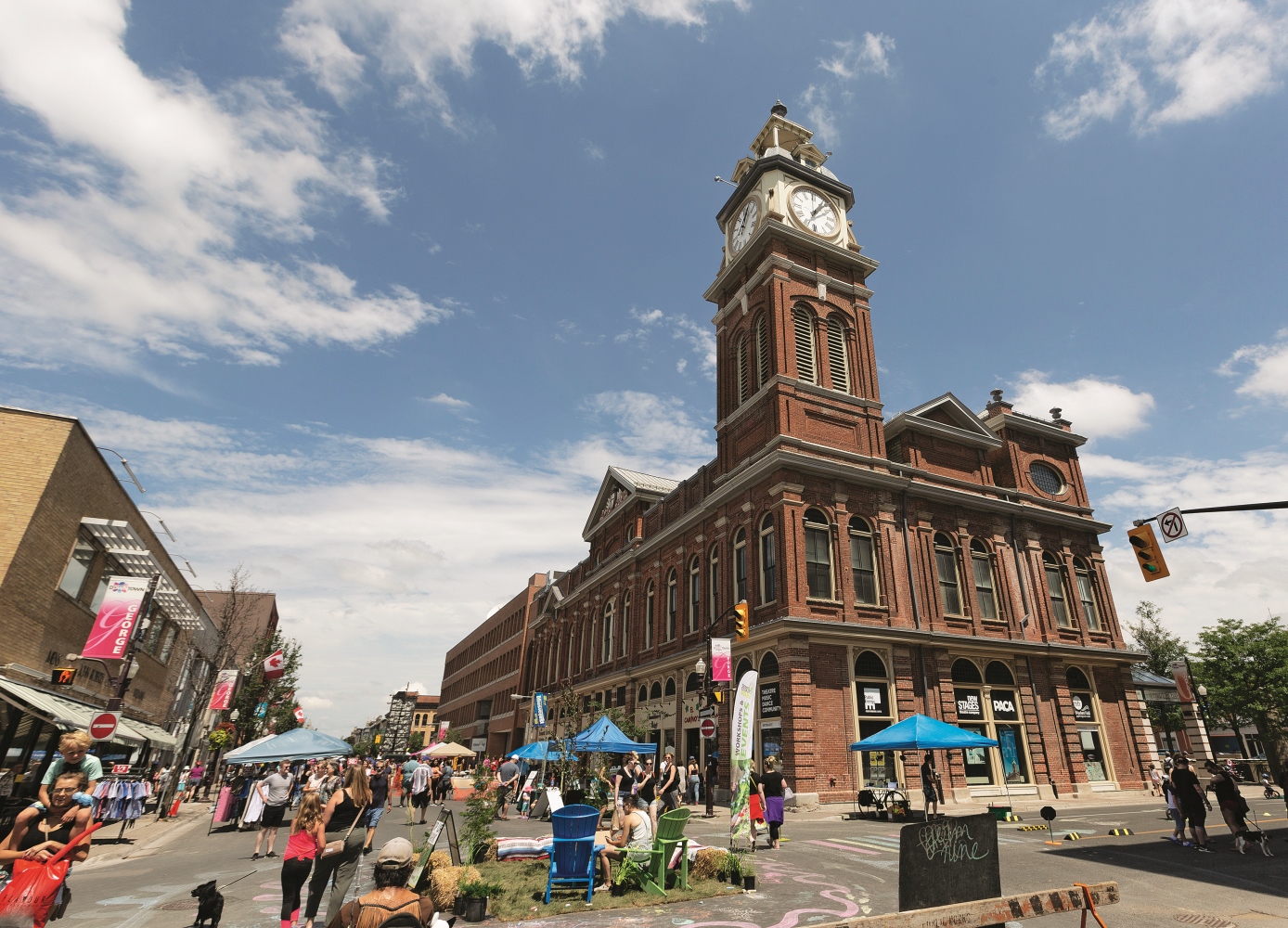“Electric City” has a detailed plan to enhance services and infrastructure for older adults
By Wendy Haaf
Photo: City of Peterborough.
Who needs to buy a cottage when you can live year-round on the doorstep of Ontario’s glorious Kawartha Lakes region in a vibrant, generous community that’s often been at the forefront of positive change? Known as Electric City—it was the first place in Canada to use that type of street lighting and one of the first to generate hydroelectric power—Peterborough “is a city that’s been ahead of the curve in a lot of areas,” says Kerri Davies, a retiree and the vice-chair of the Age-Friendly Peterborough Advisory Committee.
For example, the municipality developed a formal accessibility plan nearly 20 years ago, and more recently, drew up a detailed action plan aimed at enhancing programs, services, and infrastructure for older adults. “There are already many amenities that are conducive to making this a really senior-friendly community,” Davies says. “I think Peterborough is unique in that we have had some very forward-thinking people who have worked hard to ensure that this is a good place to live and grow.”
Indeed, Peterborough (population: 82,000), which sits on the Otonabee River surrounded by lush farmland and rolling hills, embraced 300 Syrian refugees and elected a former refugee as MP: Maryam Monsef, now Minister of Status of Women. “There are no big social divisions here,” says Rosemary Ganley, a retired teacher and a current Peterborough Examiner columnist. “We are not a rich city, but we are very generous and we have a big social conscience.” Through her reporting, Ganley says, she’s discovered that “there are all sorts of little groups doing something good.”
Peterborough also acts as an area hub for education (it’s home to Trent University and Fleming College) and medical care: it boasts a state-of-the-art regional health centre capable of handling many types of care, with more specialized services within reasonable driving distance (in Oshawa, Kingston, and Toronto). While there’s a shortage of family physicians (which the local family health team is working to remedy), many retirement communities have one on staff and an award-winning local geriatrician has helped recruit others in her specialty to the city.
Affordability is another of the city’s attractions. Though real estate prices have risen with the announcement of plans to extend the 407 ETR (Express Toll Route) from Toronto to the city, “lots of people can sell a house in Toronto, buy one here, and still have $100,000 left over in cash,” says Paul Plant, who retired two years ago. (In June 2018, the average home price in Peterborough was $427,934.)
Supply is a bit more of a problem: the rental vacancy rate is one per cent, according to Ganley. However, Davies says, “The Age-Friendly advisory committee is looking at different ways to support different types of housing.” Another drawback is that local streets are congested during tourist season, since there’s no route around the city.
Sports—spectator and otherwise—are also big. There’s an active seniors’ hockey league, as well as top-notch junior hockey, lacrosse, and Ultimate Frisbee. There are more than a dozen municipal golf courses, as well as three city recreational facilities and one at the university. More than 300 kilometres (186 miles) of signed routes and a network of trails (including a stretch of The Great Trail—formerly the Trans Canada Trail) provide ample choices for cycling and walking, while the shining waters of the river and nearby lakes are a playground for those keen on kayaking, canoeing, and fishing. When Plant and his wife, Karen Hoffman, don’t have time for the two-hour trip (including portaging) to the Haliburton provincial campground, “we just drop the canoe into the water close by and paddle for an hour or go down to a little lake right in the centre of town.” And at the Riverview Park and Zoo (the only accredited free-admission zoo in Canada), you can visit the otters, meerkats, wallabies, yaks, and camels, stroll through gardens and along trails, and play a round of Frisbee golf.
Many other forms of recreation and lifelong learning opportunities are available through an excellent local library, three seniors’ centres, educational facilities, and numerous clubs. While Ganley says she’s too busy to attend the nearby centre personally, “I hear there’s dancing, computers, dinners, and all sorts of social activities,” she says, adding that many community events are pay-what-you-can. And should you feel the urge for a Sunday drive, you can visit one of several charming small towns nearby to browse for antiques and sample butter tarts. (Peterborough and the Kawartha Lakes region have become a culinary destination.)
When it comes to the theatre, galleries, museums, and other displays of art, Plant says, “for the size of the city, there’s a lot going on.” Highlights include the Market Hall performing arts centre (just one example of the city’s charming architectural gems), a bustling live-music scene, numerous festivals (such as the free summer Peterborough Musicfest), and the Canoe Museum, which houses the world’s largest collection of these watercraft, from First Nations dugouts from the Pacific Northwest to the birchbark variety used by voyageurs. Plans are under way to move the museum, now located in a former warehouse, to a new $65-million facility next to the hand-cranked historic Peterborough Lift Lock on the Trent-Severn Waterway. “It’s going to have a rooftop garden and fit into the contours of the river,” Ganley says.
“It’s a very livable city,” she adds, “where it’s very possible to live a really active and socially involved life.”





